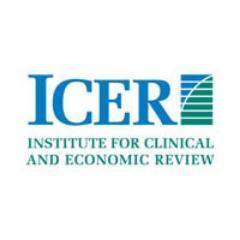
Reading opinion pieces about what is driving the high costs of health care is like listening to siblings squabble about who is getting a dying parent’s money: each stakeholder claims to be getting the short end of the stick while others appear to ride the gravy train. This narrative made national headlines last summer with Mylan’s EpiPen sticker price shock on a public that was and still is largely uninformed about the role of contract negotiations on drug pricing.
While the cost drivers for health care are complex and plentiful, trendy solutions tend to focus on “value” and the use of “evidence-based guidelines.” Both of these solutions are hallmarks of the Institute for Clinical and Economic Review (ICER), a non-profit that publishes comparative effectiveness research in an effort to ascertain the true value of competing treatments.
More than half of treatments in the U.S. are delivered “without clear evidence or effectiveness” according to the Institute of Medicine. Comparative effectiveness research, or CER, seeks to fill that gap by analyzing the cost, risk, and effectiveness of two or more treatments for a similar population with the same disease.
ICER hopes to “play a pivotal role in creating a future in which collaborative efforts to move evidence into action provide a foundation for a more effective, efficient, and just health care system.”
Whether that goal is being met and what the cost of meeting that goal is remains to be seen. Some vocal critics claim the use of this information can do everything from disrupt the patient/doctor relationship to stifle innovation, but whether there is any truth to those claims is also a mystery not backed up by data.
One thing is certain however: ICER, funded mostly by nonprofit foundations and partly by life sciences and insurance companies, is gaining mainstream publicity and may be more relevant in 2017 as the practice of comparative effectiveness research gains momentum. (But be sure to read our 2015 post, Is Sitting the New Coffee? to consider all the ways CER might also go wrong.)
In 2016, HIRC asked key decision-makers at leading commercial health plans and integrated delivery networks (IDNs) about the role that ICER plays in their decision-making. While IDNs were less familiar with the work of ICER, commercial health plans were nearly all aware and about half of the respondents said they used ICER’s data either as a supplemental data point or to make formulary decisions.
But the big cost determinant for drugs is the contracted price paid by payers, and respondents said that ICER data was not typically brought up at the negotiation table. Whether it is playing a background role or not, it leaves us wondering to what degree ICER will have its desired impact on the health care.


